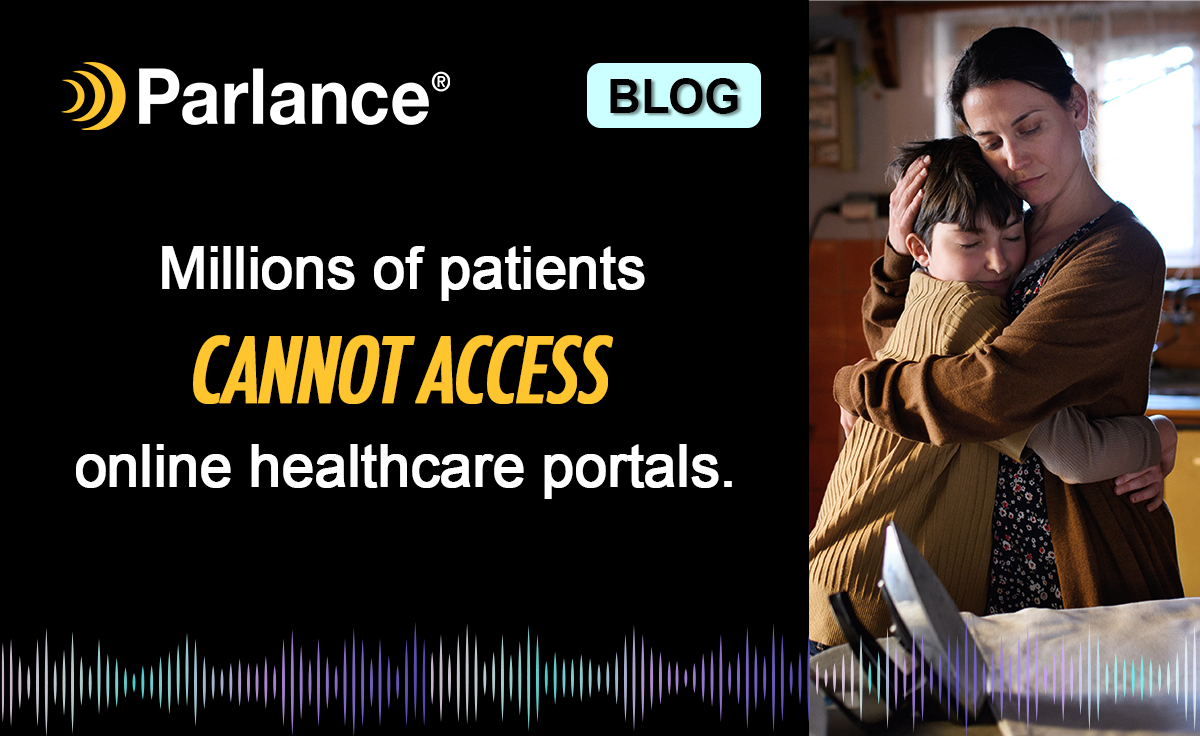Does Healthcare Digital Transformation Benefit Some Populations Over Others?
However, given the diverse backgrounds, circumstances, and abilities of patients, these transformation efforts don’t currently result in equitable access to care. Health systems that prioritize online portals and web chats create painful disparities in patient access that disproportionately affect less fortunate populations.
This inequity emerges at the beginning of the patient journey: the digital front door. Many healthcare organizations encourage their patients to get in touch via the internet, but a large portion of the American population cannot or will not go online to access a portal or use a web chat. There are three main groups that struggle when required to use the internet:
- People living in poverty – 38 million Americans live in poverty, and over 40% of impoverished adults lack access to computers. When healthcare organizations force their patients to go online first, they are prioritizing people with greater financial resources, leaving lower-income patients without easy access to care.
- People 65 and older – 71% of Baby Boomers get in touch with their healthcare providers over the phone first. 21% of Americans suffer from osteoarthritis in their hands. Hand disabilities and other physical ailments like poor eyesight make the use of portals and keyboards agonizing.
- People with limited language proficiency – Portals contain dense, unfamiliar text that acts as a hurdle for the 30 million Americans who struggle to read English. The same barrier arises for the 21% of Americans who are illiterate.
Despite the ease of access that the voice channel provides, health systems often let this channel become outdated. People who call their hospital or clinic are faced with phone trees that lead them in circles and hold times that feel eternal.
To answer the question of whether digital transformation benefits some populations over others: Yes… when the phone is not modernized.
The Right Kind of Digital Transformation
As Brian Zimmerman, AVP of Client Content and Strategy at Becker’s Healthcare says, “Digital transformation is really an opportunity to turn the tide on some of these trends and mak[e] sure you’re leaning in and taking advantage of that opportunity.” When beginning transformation initiatives, healthcare leaders have a chance to create equity for all patients by embracing the voice channel.
“It forces us to… ensure that we’re not going to leave any population behind,” notes Anika Gardenhire, CIO of Arden Health Services. “When we’re looking at these tools, we’re thinking about accessibility, we’re thinking about language, we’re thinking about third grade reading levels.”
To fully modernize the phone, health systems must integrate conversational AI that answers frequently asked questions (FAQs) and prevents long hold times. To avoid widening the gap in healthcare access, organizations should prioritize inclusive strategies that meet the diverse needs of their patient populations. Optimizing the voice channel with conversational AI is a critical step toward achieving true health equity, ensuring that all patients can access the care they need, regardless of literacy, disability, or income.
Parlance Promotes Health Equity
For over 25 years, Parlance has been a leader in the healthcare IT space. Parlance easily connects callers to the resources they need, answers FAQs, verifies patients, and handles many appointment management tasks.
Our conversational AI solutions address a large gap in accessibility and promote health equity by easing access to information, providers, and support over the phone. The more health systems that choose to prioritize the phone as a part of digital transformation initiatives, the closer we get to our goal of eliminating healthcare disparities.
By Maryellen McDonnell




